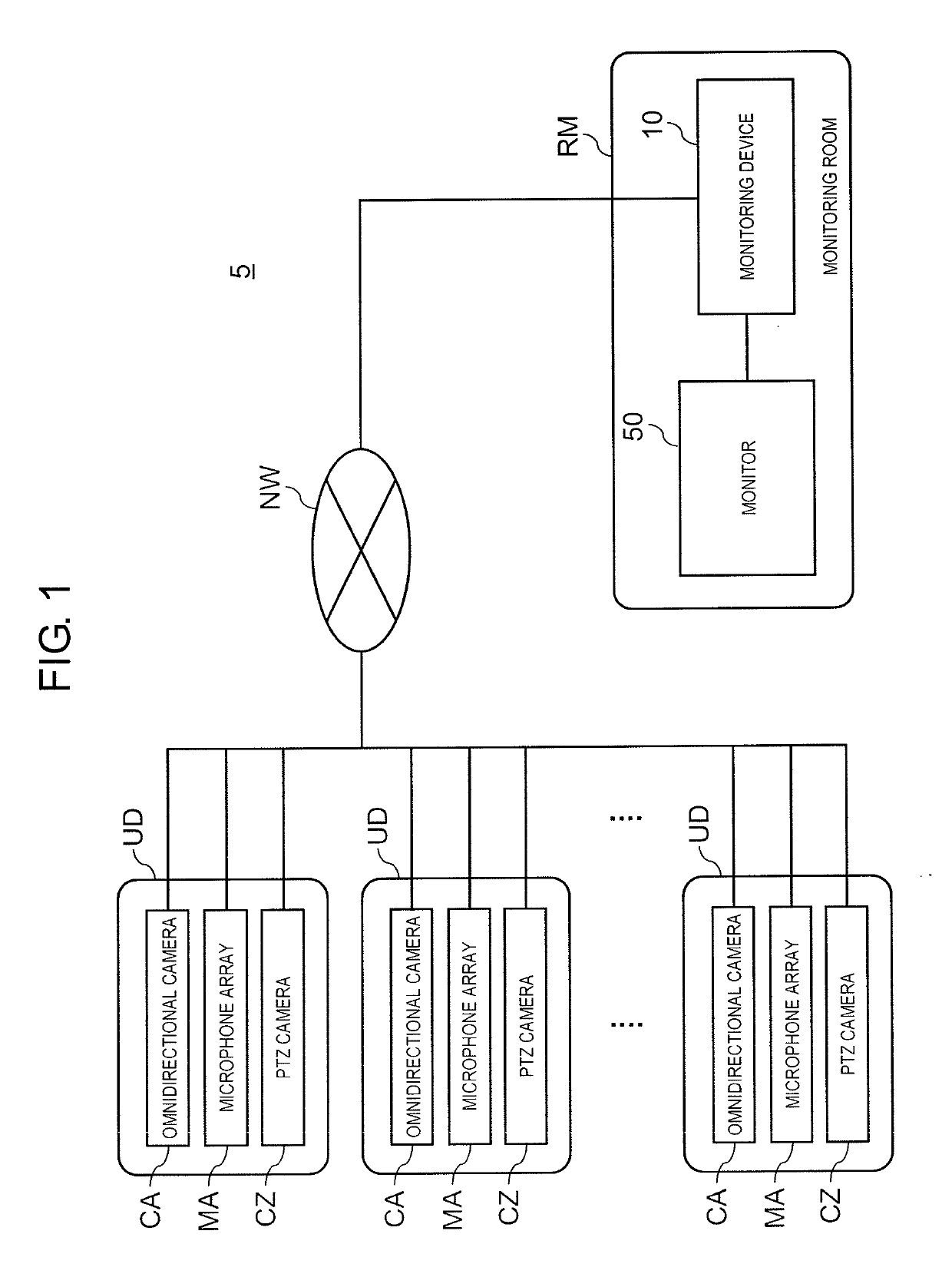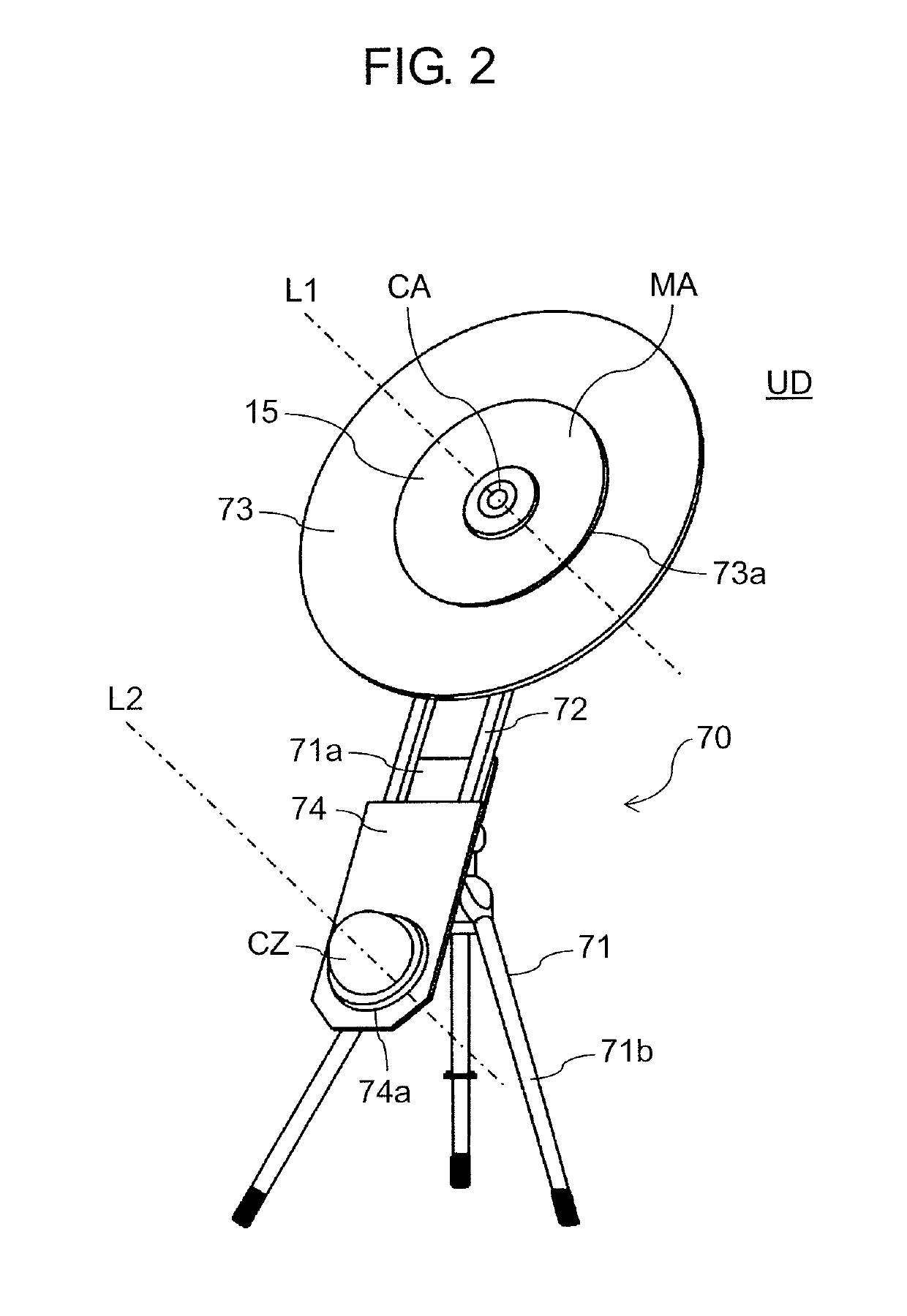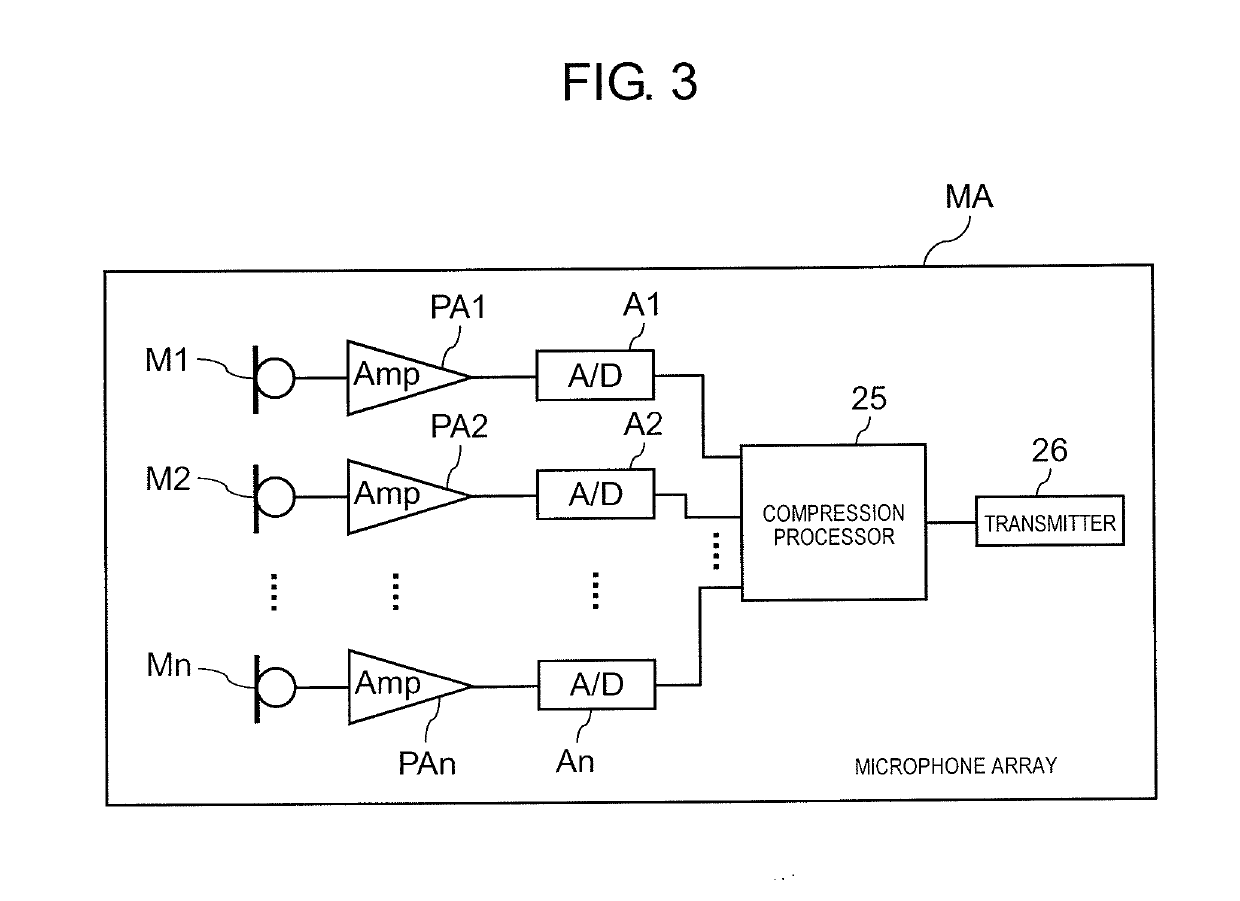Unmanned aerial vehicle detection system and unmanned aerial vehicle detection method
a technology for unmanned aerial vehicles and detection systems, which is applied in the field of unmanned aerial vehicle detection systems and unmanned aerial vehicle detection methods, can solve the problems of difficult to grasp an existence and difficult to easily grasp the position of unmanned aerial vehicles from surrounding circumstances, and achieve the effect of easy determination of existen
- Summary
- Abstract
- Description
- Claims
- Application Information
AI Technical Summary
Benefits of technology
Problems solved by technology
Method used
Image
Examples
first exemplary embodiment
[0046]FIG. 1 is a diagram showing an example of a schematic configuration of unmanned aerial vehicle detection system 5 according to a first exemplary embodiment. Unmanned aerial vehicle detection system 5 detects unmanned aerial vehicle dn (see FIG. 14, for example) desired by a user as a detection target. Unmanned aerial vehicle dn is a multicopter such as a UAV (for example, drone) autonomously flying using a global positioning system (GPS) function, a radio-controlled helicopter that is wirelessly controlled by a third party, or the like. Such unmanned aerial vehicle dn is used for, for example, aerial photographing of a target, spraying of liquid such as agricultural chemicals, transportation of goods, or the like.
[0047]In the present exemplary embodiment, a multicopter type drone having a plurality of rotors (in other words, rotating blades) mounted on is exemplified as unmanned aerial vehicle dn. In a multicopter type drone, in general, when the number of wings of a rotor is ...
first modification example of first embodiment
[0157]FIG. 16 is a diagram showing an example of a schematic configuration of unmanned aerial vehicle detection system 5A according to a first modification example of the first exemplary embodiment. In the first exemplary embodiment, the camera disposed on the same axis as microphone array MA is omnidirectional camera CA, but in the first modification example of the first exemplary embodiment (hereinafter referred to as “first modification example”), fixed camera CF is disposed so as to coincide with a center axis of microphone array MA and its own optical axis.
[0158]Fixed camera CF is a camera having a predetermined angle of view with an optical axis fixed in a specific direction, and is installed in advance so as to be able to image, for example, a space expected to fly by unmanned aerial vehicle dn. Here, angle of view ag1 of fixed camera CF is set above building group bLg.
[0159]When unmanned aerial vehicle dn is detected, a camera that changes an imaging direction to a direction...
second modification example of first exemplary embodiment
[0165]FIG. 17 is a diagram showing an example of a schematic configuration of unmanned aerial vehicle detection system 5B according to a second modification example of the first exemplary embodiment. In the first exemplary embodiment, the camera disposed on the same axis as microphone array MA is omnidirectional camera CA, and in the first modification example, the camera disposed on the same axis as microphone array MA is fixed camera CF. In the second modification example of the first exemplary embodiment (hereinafter referred to as “second modification example”), PTZ camera CZ1 is disposed so as to coincide with a center axis of microphone array MA and its own optical axis.
[0166]PTZ camera CZ1 is a camera capable of imaging by changing a direction of an optical axis, and capable of imaging by changing an angle of view in a stepwise manner in a predetermined direction (preset direction) with respect to monitoring area 8 (see FIG. 11) which is a half celestial sphere. For example, ...
PUM
 Login to View More
Login to View More Abstract
Description
Claims
Application Information
 Login to View More
Login to View More - R&D
- Intellectual Property
- Life Sciences
- Materials
- Tech Scout
- Unparalleled Data Quality
- Higher Quality Content
- 60% Fewer Hallucinations
Browse by: Latest US Patents, China's latest patents, Technical Efficacy Thesaurus, Application Domain, Technology Topic, Popular Technical Reports.
© 2025 PatSnap. All rights reserved.Legal|Privacy policy|Modern Slavery Act Transparency Statement|Sitemap|About US| Contact US: help@patsnap.com



